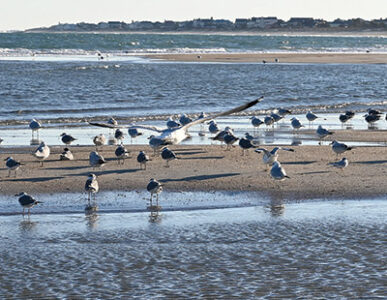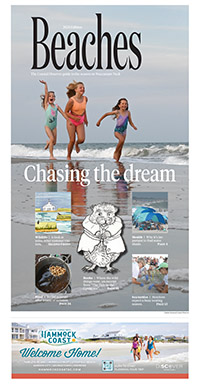Environment
Search for answers follows rare swim advisories for beaches

Officials are trying to determine what triggered spikes in bacteria levels in ocean water that prompted the state to issue swim advisories for portions of Pawleys Island and DeBordieu over the weekend.
The Department of Environmental Services samples more than 120 sites along the state’s beaches from May 1 to Oct. 1. The bacteria levels on DeBordieu near the community’s beach club and on Pawleys Island at the Hazard Street access were above the state and federal standards in tests last week.
“That certainly caught me by surprise,” Town Administrator Dan Newquist said.
The department issues a short-term advisory when a sample exceeds 104 MPN per 100 milliliters of water over two days or 500 MPN in a single sample. The abbreviation stands for “most probable number,” a scientific standard used to estimate microorganisms.
The samples count enterococcus bacteria, which is found in the intestines of warm-blooded animals. It is an indicator of other organisms that could cause disease.
The advisories recommend people avoid swimming or activities where they could swallow the ocean water. People with open wounds or compromised immune systems are advised to stay out of the water.
The advisory for DeBordieu was issued Friday night. The one for Pawleys Island was issued Sunday morning.
No one could remember the last time such an advisory was issued for either beach, if ever, Newquist said.
He used to be in charge of the water quality management program at the Waccamaw Regional Council of Governments.
“I was glad I had a little bit of background in this area,” Newquist said.
He contacted staff at Environmental Services. They thought several days of rain following a dry spell could have resulted in high levels of bacteria in stormwater runoff.
“It’s very common for short-term swim advisories to be issued in the days after heavy rain events, when rainwater washes pollutants into ocean water,” said Laura Renwick, the director of communications at Environmental Services.
The department also considered the possibility that the bacteria at the two sample locations less than 3 miles apart could be related. The beaches are separated by Pawleys Inlet.
One theory is “runoff basically exited Pawleys Inlet and came back around,” Newquist said.
If it did, it wasn’t recorded in water sampling at the south end parking lot. No swim advisory was issued at that location.
The department contacted Georgetown County Water and Sewer District to ask about spills. They checked the portable toilets at the county-owned parking lot.
“There were no concerns there,” Newquist said.
Another possibility was a discharge from a vessel offshore.
“They’ve done a fair amount of due diligence trying to isolate the source of the bacteria,” he said.
The sites were tested again over the weekend and the advisories were lifted Monday morning.
They didn’t seem to keep people away from the beach.
“There was some curiosity, as you might imagine,” Newquist said. “Nothing too alarming.”
Environmental Services did post notices on the beach.
The beaches are tested every two weeks. The next sampling on Pawleys Island will be May 29. Newquist asked Environmental Service staff to send him the results.
“If it’s out of line, we’re really going to dig in and find out what the issue is,” he said.
He also plans to check data from the six shellfish monitoring sites around Pawleys Island to see if any of those bacteria levels were elevated last week.
“Obviously we don’t want this situation here at Pawleys Island,” Newquist said.




